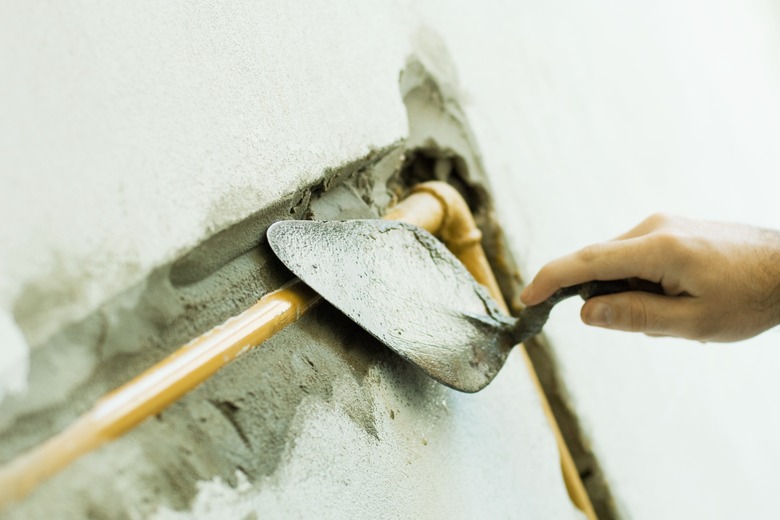Can I Soften Plumber's Putty In The Microwave?
If you've found yourself weighing the pros and cons of plumber's putty vs. silicone, then you may have wondered about putty's staying power. Plumber's putty, at some point, will harden, which means you'll need to soften the product to use it. But can you soften plumber's putty in the microwave?
In theory, perhaps. But never, ever do it, because heating plumber's putty can be hazardous to your health. Not to mention, the microwave will also dry out the putty and damage its sealant properties. Being oil-based, it's possible to give it a helping hand towards its former state, but the bigger question you might want to ask is, should you?
Tip
Never microwave plumber's putty, ever. It's dangerous, and it will shorten the sealing life of the putty.
What is Plumber’s Putty?
What is Plumber's
Putty?
Whether it's Harvey's Plumber's Putty or Oatey Plumber's Putty, ingredients for both are somewhat similar: linseed oil, modeling clay and limestone tend to be in the mix. Proprietary blends will vary, but clay and oil are always components.
Plumber's putty will be somewhat hard in the container, so the plumber in question will need to take a golf ball-sized portion of putty in their hands and work it until it's soft and pliable, which just takes a few minutes and a little patience. Then, the putty is rolled into a snake shape and applied as a sealant between fixtures. Plumber's putty shouldn't dry out; it should always maintain a bit of malleability, as this is what gives it the flex and makes it a good sealant.
Resurrecting Old Putty
Resurrecting
Old Putty
If your putty is a few years old, it's possible it's dried out and is no longer malleable. Covering it with some linseed oil for a day or two will help it reconstitute.
The catch, though, is that almost no one actually recommends doing this. The reality is, you're talking about a sealant for plumbing, and if the product has already been compromised before applying it, should you really use it? Most pros and hobbyists say no. Instead, throw that tub out and get a fresh tub.
Don't use heat sources of any kind for softening or resurrecting plumber's putty. Flammable ingredients are common in putty and can become hazardous in multiple ways when heated.
Plumber’s Putty vs Silicone
Plumber's
Putty vs Silicone
If you're asking yourself which product will do the job better for you, plumber's putty or silicone, the answer is often silicone sealant or caulking. Despite the catchy name, the truth is that most plumbers will stick to caulking for their day job.
Why? Because plumber's putty is petroleum-based and stains stone surfaces like granite. It also damages some plastics. For a product that can handle all the jobs, caulking is the way to go. Plus, putty is known to dry out and crack, which is not what you're looking for in a sealant. It also doesn't have adhesive quality.
Should You Use Plumber’s Putty?
Should You
Use Plumber's Putty?
Absolutely! It has its place. The best situations for plumber's putty are in tight, awkward spaces where caulking tubes and guns won't reach. Of course, you can't use it on some plastic pipes, but many situations would be fine for putty. It's also a great choice for sealing the base of sinks and drains.
Don't use putty when it's on fixtures that will be exposed to sunlight, as it will dry out and crack eventually. Also, avoid using putty when there is any sort of water pressure, as it won't maintain its seal under any pressure.
Plumber's putty is great for some tasks, but it also has its drawbacks. When the putty is malleable and moldable after being hand-warmed, not microwaved, it might indeed be what your job ordered.
